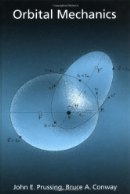
-
R 3,100.00
- EMAIL US
- OUT OF STOCK
- Download Catalogue

One of the major challenges of modern space mission design is the orbital mechanics — determining how to get a spacecraft to its destination using a limited amount of propellant. Recent misions such as Voyager and Galileo required gravity assist maneuvers at several planets to accomplish theiir objectives. Today's students of aerospace engineering face the challenge of calculating these types of complex spacecraft trajectories. This classroom-tested textbook takes its title from an elective course which has been taught to senior undergraduates and first-year graduate students for the past 22 years. The subject of orbital mechanics is developed starting from the first principles, using Newton's laws of motion and the law of gravitation to prove Kepler's empirical laws of planetary motion. Unlike many texts the authors also use first principles to derive other important results including Kepler's equation, Lambert's time-of-flight equation, the rocket equation, the Hill-Clohessy-Wiltshire equations of relative motion, Gauss' equations for the variation of the elements, and the Gauss and Laplace methods of orbit determination. The subject of orbit transfer receives special attention. Optimal orbit transfers such as the Hohmann transfer, minimum-fuel transfers using more than two impulses, and non-coplanar orbital transfer are discussed. Patched-conic interplanetary trajectories including gravity-assist maneuvers are the subject of an entire chapter and are particularly relevant to modern space missions.

The specification in this catalogue, including without limitation price, format, extent, number of illustrations, and month of publication, was as accurate as possible at the time the catalogue was compiled. Due to contractual restrictions, we reserve the right not to supply certain territories.